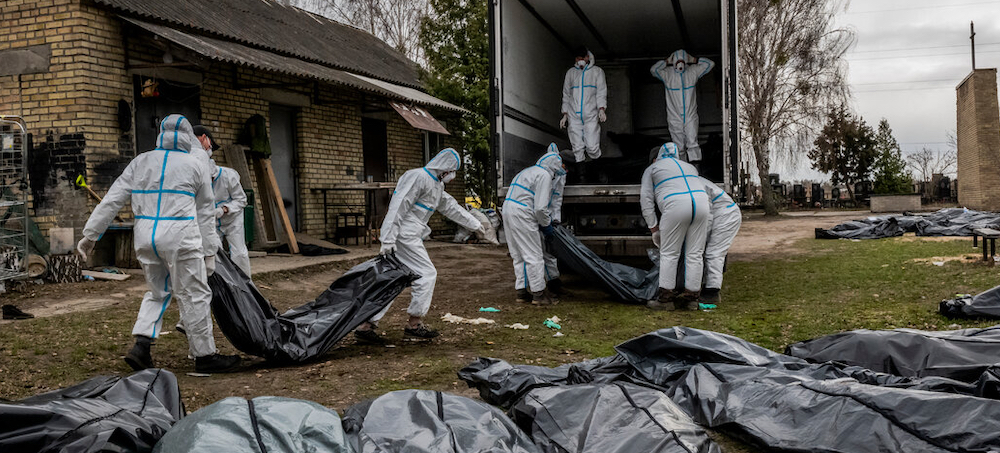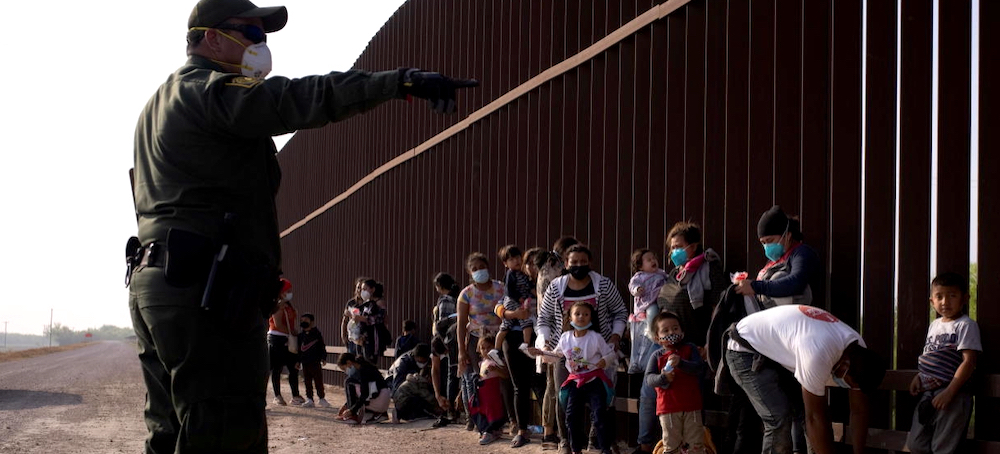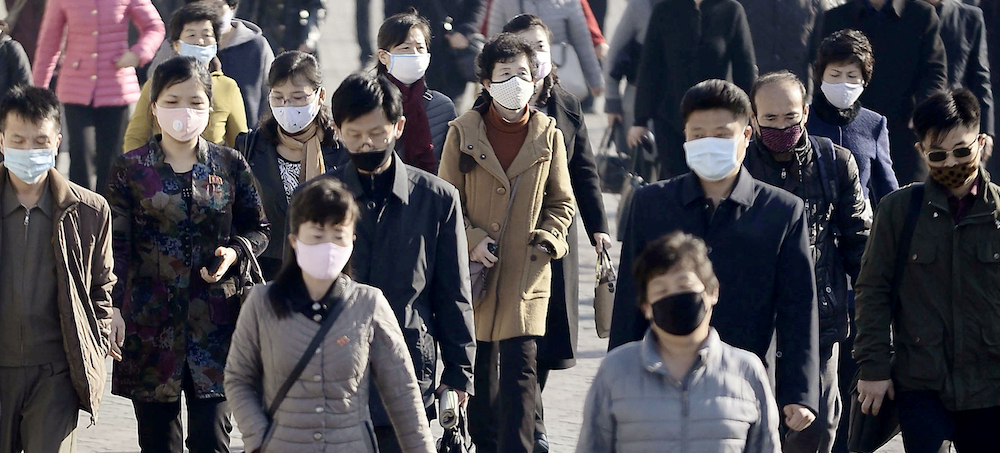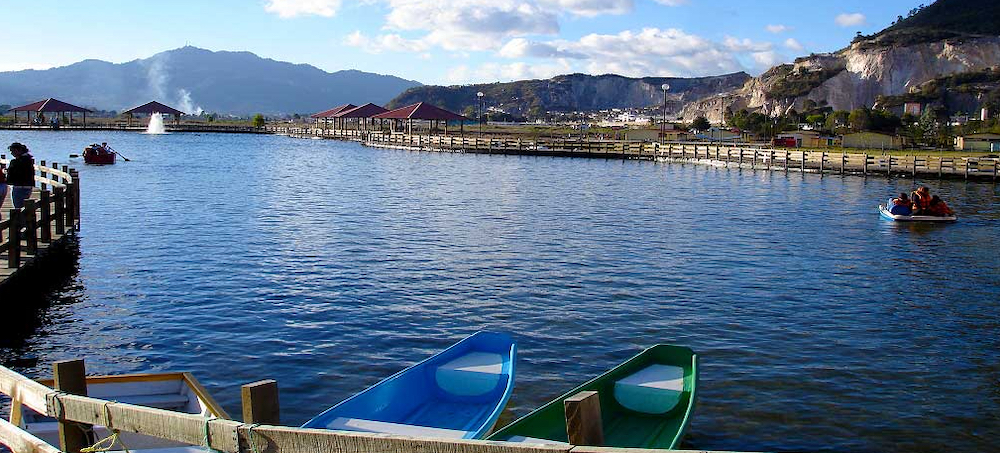Live on the homepage now!
Reader Supported News
This month, Bernie Sanders got the chance to talk to Amazon Labor Union organizers at a Jacobin event. He told them that he will do everything he can to see their efforts spread all over this country.
All across this country, people are saying, “Whoa. If these guys at Amazon are taking on that company, we can do it too.” As Nelson Mandela said, “Everything is impossible until it is done.” You did it. Already, there are Amazon warehouses all over the country that want more information as to how you did it. We’re looking at a national, sweeping movement.
I think that in America today — and you are helping to lead the effort — people are sick and tired of corporate greed. You work for a company owned by a man who is worth $180 billion. He has spent $500 million on a yacht. He has a mansion with twenty-five bathrooms. And yet he is continuing to squeeze his workers as hard as he can, and to fight the ability of workers to come together for decent wages, decent benefits, decent schedules, and decent working conditions.
Whether it’s Jeff Bezos, the people who own Starbucks, or wherever else exploitation is taking place, people are saying, “Enough is enough.” Today we’re living in an economy where it’s not just Bezos — you have all kinds of corporations making huge amounts of profits. We have more income and wealth inequality than we’ve had in a hundred years. During the pandemic, Bezos and others have become phenomenally richer, while ordinary workers are falling further and further behind.
What I think working people understand is that, if they’re going to get decent wages and dignity on the job, they need to come together; they need to form a union; they need to sit down together and get what they need through collective bargaining. I don’t know if we’re entering a period like the 1930s and the Depression, when we saw massive union organizing. At that point, unemployment was really high; people were terribly exploited.
We’re living in a different time right now. But I think that, at this moment, what you guys at Amazon have done has touched a nerve. People are saying, “Enough is enough. Working people in the richest country on earth deserve decent wages, health care, schedules, etc.” I look forward to working with you, and I know that I have colleagues in Congress who feel the same.
Our demand now is that Bezos and Amazon sit down and start negotiating a contract with you. Our demand is that he stop spending millions to stop workers from exercising their constitutional right to form a union. I’m enormously gratified and inspired by what you have done, and I look forward to doing everything I can to see the work that you have done spread all over this country. Congratulations, and keep up the great work.
 Russian president Vladimir Putin and Dmitry Medvedev. (photo: Dmitry Astakhov/Reuters)
Russian president Vladimir Putin and Dmitry Medvedev. (photo: Dmitry Astakhov/Reuters)
 Uyghur women surround a Chinese riot policemen as they protest in Urumqi, China. (photo: AFP)
Uyghur women surround a Chinese riot policemen as they protest in Urumqi, China. (photo: AFP)
 Bodies of dead Ukrainians being loaded into a truck. (photo: NY Globe)
Bodies of dead Ukrainians being loaded into a truck. (photo: NY Globe)
 A U.S. Border Patrol agent instructs asylum-seeking migrants as they line up along the border wall after crossing the Rio Grande river into the United States from Mexico on a raft, in Penitas, Texas. (photo: Adrees Latif/Reuters)
A U.S. Border Patrol agent instructs asylum-seeking migrants as they line up along the border wall after crossing the Rio Grande river into the United States from Mexico on a raft, in Penitas, Texas. (photo: Adrees Latif/Reuters)
 People wearing protective face masks commute amid concerns over COVID-19 in Pyongyang, North Korea. (photo: Kyodo/Reuters)
People wearing protective face masks commute amid concerns over COVID-19 in Pyongyang, North Korea. (photo: Kyodo/Reuters)
 The Wetlands Park of San Cristóbal de Las Casas. (photo: Travel By Mexico)
The Wetlands Park of San Cristóbal de Las Casas. (photo: Travel By Mexico)
The mountain wetlands are at risk of becoming just another afterthought in a story about urbanization. The ecosystems have been eliminated and degraded by land invasions, irregular settlements and, most notably, the inaction of officials at all levels.
The latter have ignored the number of at-risk species that rely on the wetlands as well as the important role the watershed plays in the survival of San Cristóbal de las Casas. The La Kisst and María Eugenia wetlands replenish and filter springs that supply around 70% of the city’s water.
The wetlands are easy to miss. Most are between 3 and 5 meters (9 and 16 feet) deep and 2,000 meters (6,600 feet) above sea level. Their ecosystems regulate climatic conditions and control flooding.
They’re also the only wetlands in the world where, to date, the popoyote, also known as the Chiapas killfish of San Cristóbal (Profundulus hildebrandi), has been documented.
The habitat protects other at-risk species like the bearded screech owl (Otus barbarus) and the western ribbon snake (Thamnophis proximus). Also at risk are several migratory birds like the blue-winged teal (Anas discors) and great egret (Ardea alba).
A little more than a decade ago, residents of San Cristóbal de las Casas started fighting to prevent the disappearance of their water. Their efforts reached new levels when, in 2015, they started to speak out against the land invasions, illegal land fillings, land-use changes and urbanization projects that were erasing the ecosystems.
Their complaints made it to the National Commission on Human Rights (CNDH), an organization that at the end of January made formal recommendations to Mexico’s Secretariat of Environment and Natural Resources (SEMARNAT), the National Water Commission (CONAGUA), the Federal Attorney for Environmental Protection (PROFEPA) and the attorney general of Chiapas, as well as the municipality of San Cristóbal de las Casas.
“Far from taking measures to protect, preserve and remedy such complex ecosystems, the three government bodies have accelerated their abandonment,” the CNDH document said. “Such ecosystems face an ever-worsening process of deterioration, affecting the water table in San Cristóbal.”
The commission recommended that they develop an interinstitutional plan for preserving the wetlands. It also announced that it would introduce complaints to internal bodies responsible for investigating administrative irregularities and alleged environmental crimes.
Plans go awry
In 2008, the wetlands of La Kisst (110 hectares, or 271 acres) and María Eugenia (115 hectares, or 284 acres), were recognized as naturally protected areas subject to ecological conservation in the state of Chiapas. That same year, they were also put on the Ramsar list of internationally important wetlands.
Residents of San Cristóbal pushed for them to become protected areas, according to Alma Rosa Rojas, a member of the Citizen Council for Water and Territory in Valle de Jovel. However, the state declarations ran into several problems: they hadn’t carried out prior consultation with the public, hadn’t revised the territorial ecological plan and, most importantly, the land marked for protection hadn’t been properly expropriated.
As a result, some landowners retained possession of areas that were supposed to be protected, allowing them to fight back against the declaration. The courts ruled in their favor, giving them permission to sell and fill in the land. This accelerated the wetland deterioration and urbanization.
In 2015, the defense of the wetlands started to intensify. That year, residents near the María Eugenia wetlands started organizing against a construction company that was planning to build a subdivision within the protected area.
Since then, members of the Citizen Council for Water and Territory in Valle de Jovel, the Coordination of Southern Communities (Cocosur), the General Council of the Southern Zone and Wetlands, the General Council of Neighborhoods, Colonies and Subdivisions, among other groups, have started submitting complaints and documenting the damage being done to the wetland ecosystems.
Between 2018 and 2021, at least 20 hectares (49 acres) of the María Eugenia wetlands, more than a sixth of its total area, were destroyed, according to León Ávila, an agroecologist from the University of California, Berkeley. Ávila is also a member of the General Council of the Southern Zone and Wetlands.
During an October 2020 test, the National Commission of Protected Natural Areas (CONANP) found that the Ramsar site at María Eugenia was undergoing housing construction without any kind of permit and that vegetation in the wetlands was being modified. In the case of the wetlands of La Kisst, it was discovered that government offices were being built within the protected area.
Environmental crimes go unpunished
Between 2015 and October 2020, PROFEPA received at least 27 complaints about the illegal filling in of wetlands, according to information included in the CNDH recommendation. There were also 15 complaints presented to the federal and state attorneys general against the local government and the municipal water utility of San Cristóbal de las Casas. The complaints concern crimes against biodiversity, the discharge of residuals, and the exploitation of waters that are listed as national property.
None of the complaints have moved forward at all, according to Ávila, who remembers one of the more recent cases, in which it was discovered that one of the investigation folders was empty. The documents and tests that had been provided as evidence were nowhere to be found.
In addition to deforestation and filling, residents allege there are groups selling water from the wetlands. “On the one side, they destroy them, and on the other, they make a business out of them.”
The illegal use of water from the wetlands is even recognized by state officials. “There are organizations that dedicate themselves to irregularly collecting water and distributing it in pipes in San Cristóbal de las Casas,” said biologist Pedro Sánchez Montero, director of natural areas and wildlife at Chiapas state’s Secretariat of Environment and Natural History (SEMAHN).
Years too late
At the end of January, five years after residents filed their first complaint against the CNDH, the organization published recommendation 18/2022.
In the document, the CNDH said that “practically all the prohibited activities referred to in the declarations have been carried out in the wetlands, not only by individuals but also by state and municipal agencies. There have been land-use changes, pollution, construction, the filling in of wetlands and modifications made to runoff routes.”
It also noted that in 2007 and 2015, the municipal council authorized land-use changes to facilitate the urbanization of the area where the wetlands were located.
In the recommendation made to the federal, state and local authorities, the CNDH asked that actions be taken to protect the mountain wetlands of San Cristóbal de las Casas. One of the recommendations included updating the zoning of protected natural areas. It asked the state attorney general of Chiapas to develop a protocol for investigating environmental crimes.
In the document, the CNDH said it would present complaints to the internal control bodies of SEMARNAT, to the municipal government of San Cristóbal de las Casas and the attorney general of Chiapas regarding officials connected to administrative irregularities and alleged crimes.
The CNDH’s recommendation was added to the one presented in May 2021 to the Chiapas State Commission on Human Rights.
At that time, the state commission was pushing for a natural resources management plan, the recovery of the ecosystem, and the filing of administrative procedures against officials who failed to comply with their obligations to properly manage the wetlands.
However, the state secretariat of the environment and San Cristóbal de las Casas City Council rejected the recommendation. The invasions continued, as did government inaction.
In December 2018, the Chiapas state government changed, bringing in a new administration and state secretariat of the environment, both more willing to act on the recommendation.
“Since 2020, an interinstitutional group has been formed,” said Sánchez Montero, the SEMAHN natural areas director. “An updated diagnosis of the impact on the wetlands is being carried out. We have started a dialogue with the invading groups.”
Sánchez Montero said the complaints are being addressed but also acknowledged that the issue hasn’t advanced in the state attorney general’s office.
In October 2021, Mariano Díaz Ochoa took office as mayor of San Cristóbal de las Casas. His brother owns the construction company that tried to build the subdivision in the María Eugenia wetlands in 2015. This is the third time that Díaz Ochoa has held office.
Although he signed a statement defending the wetlands, residents were quick to doubt him. They say they hope that the government acts, that the wetlands receive true protection, and that the officials responsible for their degradation receive the proper punishment.
“We’re going to continue pressuring them into responding to the recommendations,” said Alma Rosa Rojas of the Citizen Council for Water and Territory in Valle de Jovel.
Invasion and deforestation
The story of the mountain wetlands of La Kisst and María Eugenia is similar to that of other protected natural areas in San Cristóbal de las Casas.
In 2007, for example, 102 hectares (252 acres) of Huitepec Alcanfores were declared a protected natural area — but only on paper. The area still doesn’t have a management plan and continues to experience deforestation.
Citizen groups have asked officials at all levels of government to investigate if land-use changes have been authorized in the area, as there have been sales within protected territory.
Sánchez Montero said invasions and deforestation in the area have led to the loss of a natural water flow. Also, he said that this year they will have “the necessary legal instruments to adequately manage the area.”
The 2.7- hectare (6.6-acre) Quenvó Cuxtitali and 102-hecatare (252-acre) Gertrude Duby reserves, protected areas located east of San Cristóbal de las Casas, are also undergoing forest loss.
As in many other parts of Chiapas, these protected areas have suffered from land invasions and urbanization, often at the hands of political actors. “There are people that have profited from the need for housing,” said Martín López, a member of the board of directors of the Maya colony.
The invasions started in 1994 but have been intensifying since 2012, in response to the policies of Chiapas’s then-governor, Manuel Velasco, of the Green Ecologist Party of Mexico (PVEM). In 2018, a change in government saw Velasco replaced by Rutilio Escandón of the National Regeneration Movement (Morena), but the invasions and irregular settlements haven’t stopped.
SEMAHN’s Sánchez Montero said a little more than 50% of the state’s forests have been lost over the past 50 years.
The Gertrude Duby Reserve “was erased from the map. It’s urbanized now,” Ávila said.
The reserve’s status, Sánchez Montero said, is “very concerning” because there’s already an at-risk population on the site and many of those people are being relocated toward the Quenvó Cuxtitali Reserve, where the spring is located that supplies water to the northern region of San Cristóbal de las Casas.
For years, residents of the Cuxtitali neighborhood, custodians of the spring in the Quenvó reserve, have spoken out against the imminent invasion of the protected natural area. Until now, they haven’t been heard.
Tensions between the invading groups and those who want to save the reserve and the spring have escalated in recent years. The situation has gotten so bad that, at the start of 2022, some residents of Cuxtitali were kidnapped for several hours.
Those who have organized defenses of the natural areas around San Cristóbal de las Casas are asking that city planning be organized “so that it no longer grows in an irregular and unpredictable way; that it no longer grow onto wetlands, reserves and riverbanks,” said Martín López of the Maya neighborhood. They also ask that reserve protections be respected and that the wetlands be conserved “because they are our water reserves.”
Missing water
Due to its climate, San Cristóbal de las Casas is a unique place. But it’s also started to change.
León Ávila said he remembers that the rain in the city used to be continuous. Rarely would it come down in a storm. Now, it’s common to have torrential downpours. “[We get] in an hour what we used to get in eight,” Ávila said. “That collapses the drainage system, and the city floods. And now the civil engineers want to do more work to take out the water in the city. We told them what they need to do is save the wetlands.”
In the San Cristóbal de las Casas region, the extreme climate conditions have become common. It rains a lot or not at all. In 2019, for example, there was a notable dry season in which, for the first time, the creeks and lakes of María Eugenia dried up.
So far this year, the rains haven’t been like they were in previous years. “It hasn’t rained like it did before. You go into the wetlands and don’t see the same water as before,” Ávila said.
And while the lack of water is already being felt in many neighborhoods of San Cristóbal de las Casas, one soft drink company has obtained two concessions to extract around 500 million liters (132 million gallons) of water annually in the municipality.
Alma Rosa Rojas, of the Citizen Council for Water and Territory of Valle de Jovel, said it’s urgent that the mountain wetlands of San Cristóbal de las Casas be declared a site of public interest by expropriating them. “If they are not expropriated, the destruction will not stop.”
For the moment, the state government hasn’t considered carrying out expropriations, said SEMAHN’s Sánchez Moreno.
The residents defending the wetlands have already done the work to get the wetlands listed with Ramsar, as well as to request a technical advisory mission in Mexico. The priority for them is to save these ecosystems. They know that the future of the species there, and of San Cristóbal de las Casas, depends on them.
“This is a fight for life,” León Ávila said. “We’re not 10 people. We’re thousands fighting for water in Valle de Jovel.”
This article was originally published on Mongabay.
Special Coverage: Ukraine, A Historic Resistance
READ MORE
Follow us on facebook and twitter!
PO Box 2043 / Citrus Heights, CA 95611



No comments:
Post a Comment
Note: Only a member of this blog may post a comment.